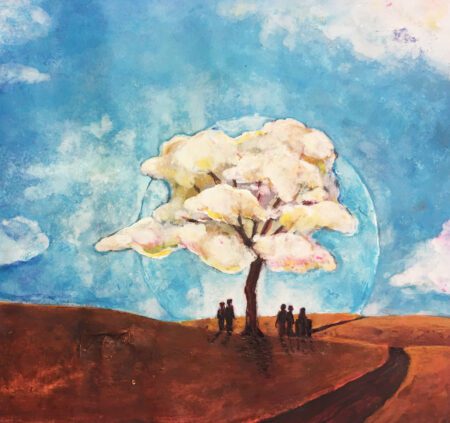Year In Review
At the end of every year we do an exercise–the “Year in Review”–going through the year and listing what impacted us and what we accomplished (click here for a hand out with instruction on doing a YIR).
Bigger Reflections
As often happens with that exercise, it led to bigger reflections about where we’ve been and where we want to go. We thought about what we’d originally been hoping to accomplish through Creative Wellbeing Workshops, both professionally and also personally.
Our Aspirations Back When We Started CWW: Happiness!
When we started CWW in 2009, we were on fire to share the research on happiness and wellbeing that was coming out of the field of positive psychology.
Much of Positive Psychology Principles Have Been Incorporated Into General Psych
Thankfully, many of those ideas have been subsumed into general psychology. On the other hand, there are still a few gems from PP that we think don’t get the attention they deserve and that continue to have profound impact on both our clients and ourselves.
Our Greatest Takeaways from Positive Psychology:
- Bad is stronger than good: the negativity bias makes us more likely to notice and focus on negative input (either internal or external). This is true of everyone.
- The way you see the world depends heavily on the way you are feeling and your physical state. We see more negativity when we are tired, stressed out, or upset.
- For that reason, not only do people who are experiencing chronic negative emotions and physical challenges need to find ways to take very good care of themselves and to actively feel more positive emotions and wellbeing; but people who are generally well need to do the same.
- Feeling positive can happen in a matter seconds (animals, nature, music, breathing, mindfully noticed what and who is around us and what we are experiencing, doing for others, humor, small accomplishments, looking at photos that make us smile, etc.).
- When we feel better and see things differently, we can handle things that might otherwise seem overwhelming and unresolvable and we feel more willing and able to take on challenges.
- Feeling better helps overcome the negativity bias and we are able to find and see more good in the world.
- We can also consciously build positivity by “attending to the good”—noticing and building on what is functional and working in our lives and around us.
- Relationships are critical to wellbeing. Even though other people can often stress us out (think about how much therapy we do just about our relationships), having a couple of key solid relationships is critical to our happiness.
- Kindness really matters in relationships. It’s never too late to practice more kindness with the people we love. And even more importantly the people we don’t.
- People who are pessimistic are more realistic at assessing risks and people who are optimistic see more possibilities but neither is better. It matters more if you are doing well (see #3) and feeling empowered in the important areas of your life.
- Regardless of who we are, because we are always more unconsciously attended to negativity, and stress exacerbates that, we need to consciously induce positivity, especially when we are going through something stressful.
- When we are going through something stressful, we want to use our strengths and collaborate with others and their strengths to help manage those stressors.
- It is important to know our weaknesses but also to know our strengths and unique qualities. Our strengths can help us manage our weaknesses.
- Being more positive does not mean we avoid negativity—when we are upset or grieving, we need to express that and let it metabolize itself. That happens differently for different people. Sometimes bad things happen and trying to give them a positive spin is harmful (toxic positivity).
- Toxic positivity shames and overrides negativity. Toxic positivity is not the same thing as fostering positivity and wellbeing.
- On the other hand, positivity can be supportively introduced when we are experiencing negativity to help loosen its grip on us (e.g., fostering hope when we are discouraged, animals and comfort to soften our pain, humor to break through darkness, awe to pull us out of ourselves and remind us of the unbending but awesome majesty of nature, helping others to feel compassion for other people who are struggling).
Still Passionate But Pivoting to Focus More on Art
At the end of making this list, we’re clear we are still passionate about happiness and wellbeing. On the other hand, we were also reminded that, 13 years later, we want to focus more specifically on how art can uniquely contribute to that, especially to how we see the world.
Pivoting to More Art
So, as we have recently mentioned, CWW will be presenting workshops on the power of art to help us shift and broaden our perceptions so that we learn more about ourselves and about others. Click here to learn more and stay tuned in January when we’ll announce the dates of the first set of workshops.
Have a safe holiday. We look forward to collaborating with you in 2023!
Warmly Rebecca and Gioia
Art Directive
Download the Year In Review Handout and go through your 2022. You can do this alone but it can also be fun and enjoyable to do it with someone else who can help job your memory about what you experienced and did last year.
After you finish your list, follow the instructions on the handout for making a vision board for next year!
